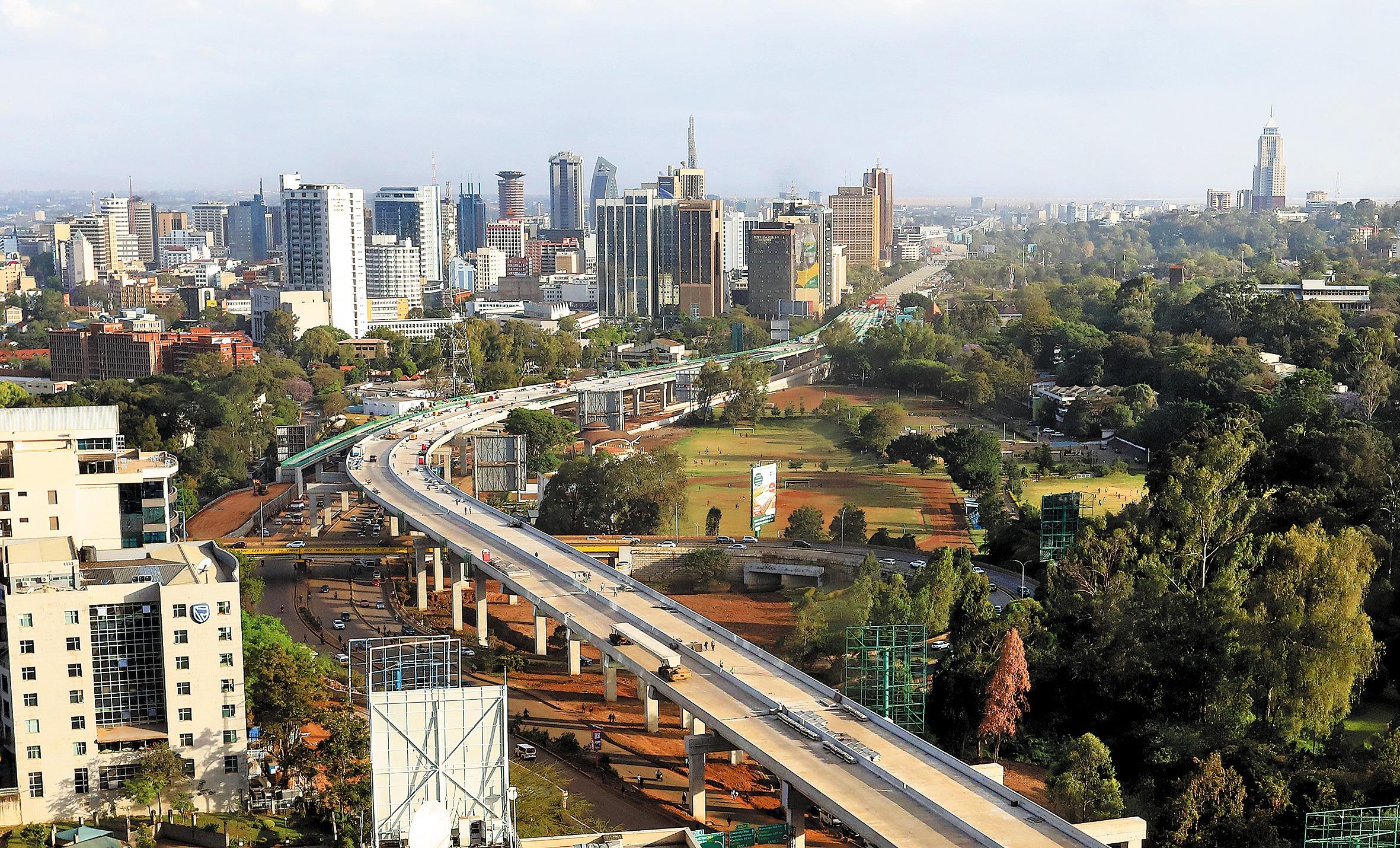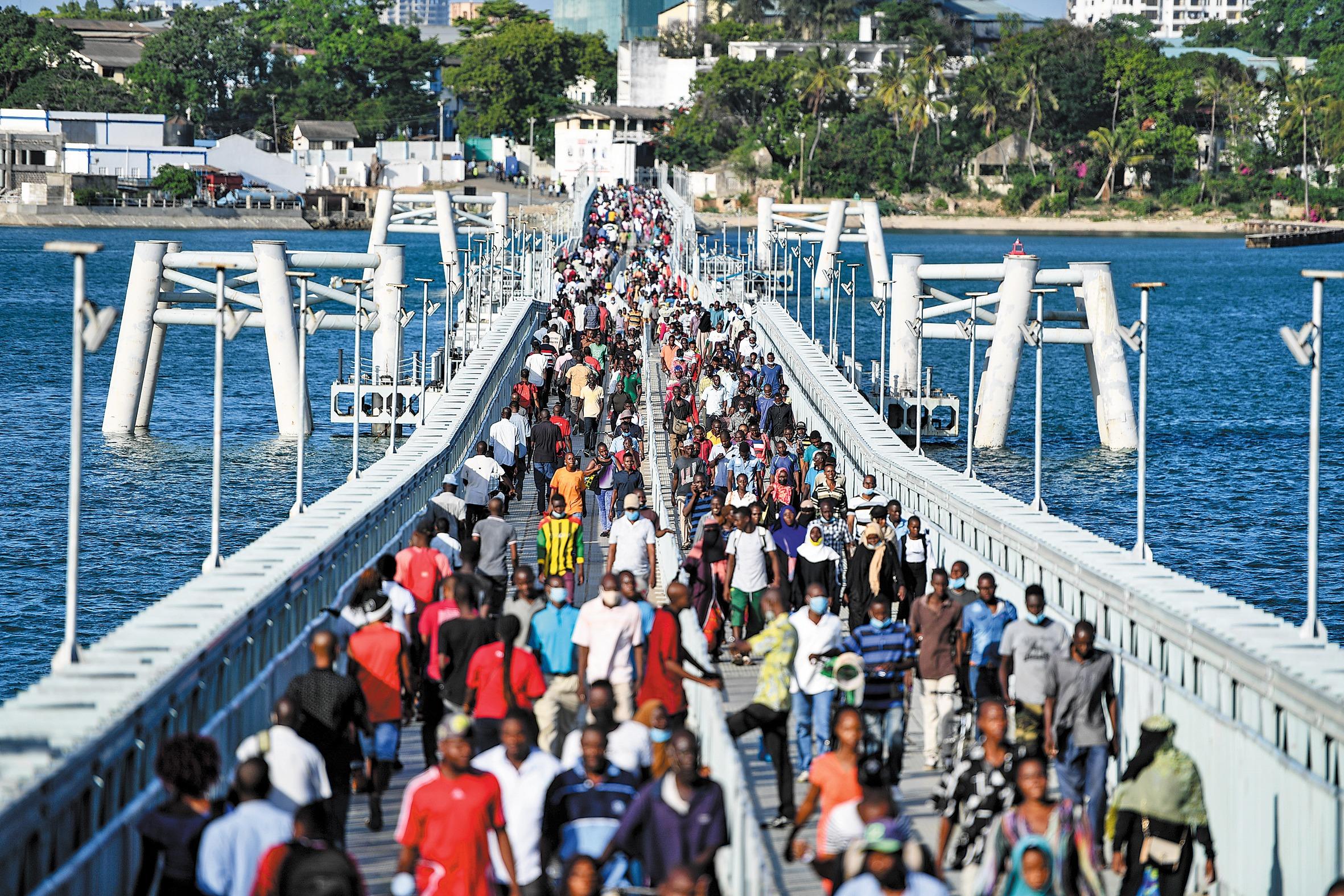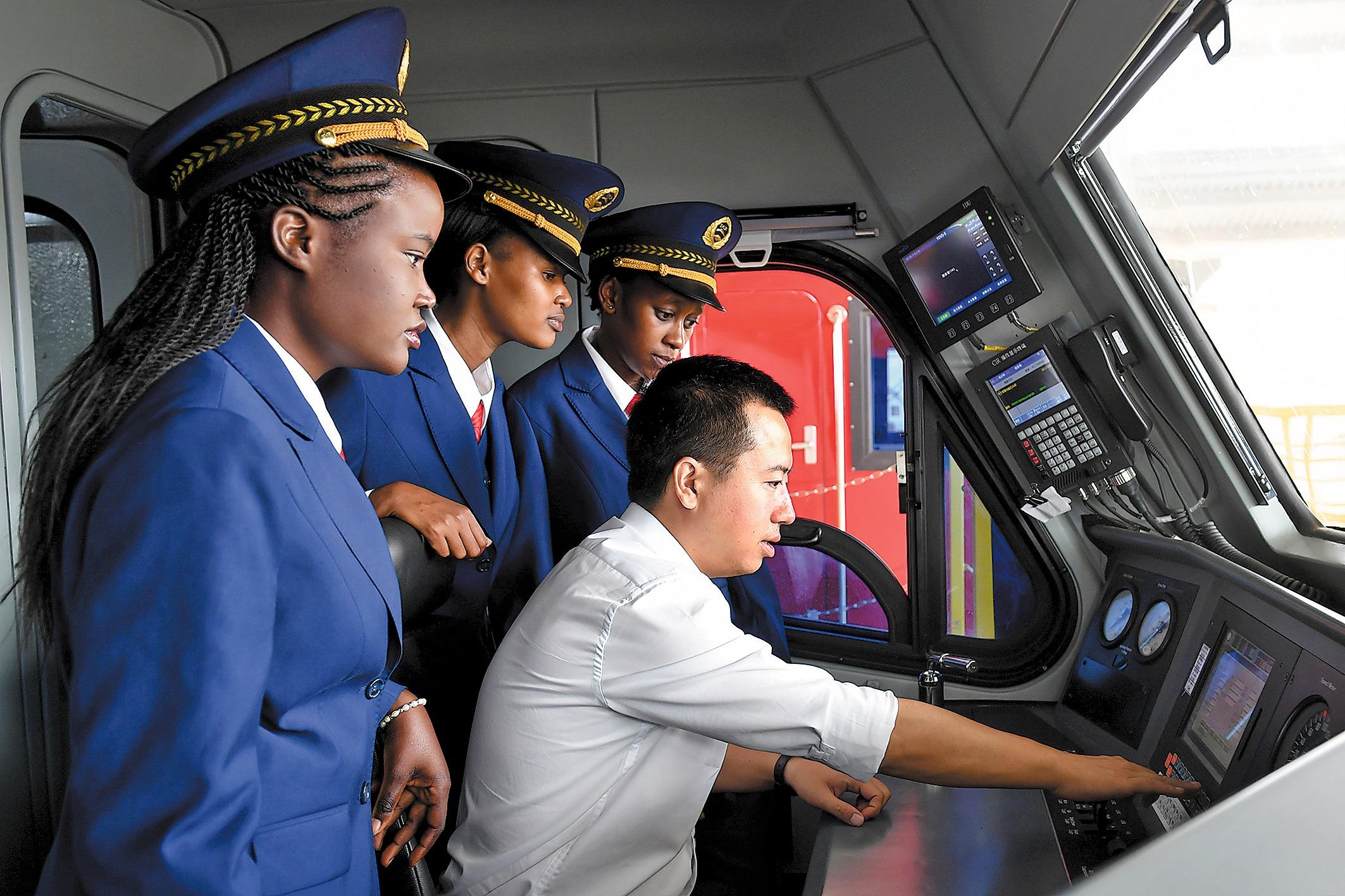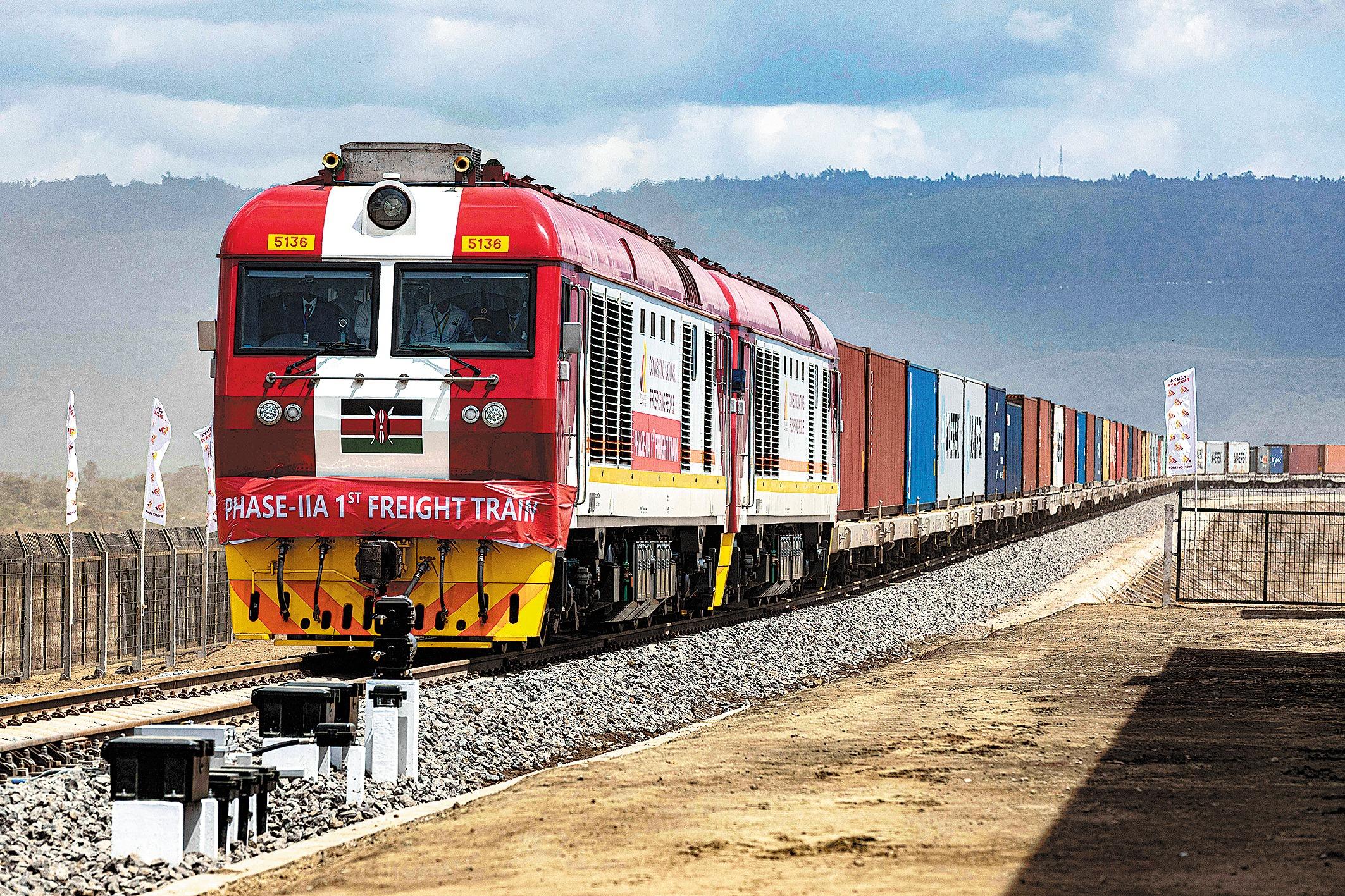Kenya is a key beneficiary of the China-led program amid better transport links, digital connectivity
 A section of the Nairobi Expressway in Nairobi. (PHOTO / XINHUA)
A section of the Nairobi Expressway in Nairobi. (PHOTO / XINHUA)
Editor’s note: This year marks the 10th anniversary of the launch of the Belt and Road Initiative. A decade of practice has demonstrated that it is a broad and prosperous way for China and the world to share opportunities and seek common development. China Daily finds out how the road of peace, prosperity, openness, green development, innovation and civilization will contribute more to the shared future of mankind.
The Belt and Road Initiative, or BRI, has transformed Kenya’s infrastructure development, injected vitality into its economic growth and improved the country’s regional competitiveness, according to latest analysis.
Thanks to the China-led initiative, which is celebrating 10 years of its establishment, Kenya boasts modern infrastructure like railways, roads, ports, airports and digital connectivity, experts said.
Cavince Adhere, a scholar of international relations with a focus on China-Africa relations, said BRI projects in the transportation, communication and financial sectors have contributed to making Kenya a more formidable economic hub in the East African region.
He said the standard gauge railway, or SGR, which connects the capital Nairobi with Mombasa, the largest port city in Kenya, has provided a major link for many traders.
Mombasa port serves 80 percent of regional trade and is the gateway and exit point for cargo for a vast hinterland covering Rwanda, Uganda, South Sudan, Burundi, the Democratic Republic of Congo, Tanzania, Ethiopia and Somalia.
 The Liwatoni Floating Bridge that was built by China Road and Bridge Corporation has eased traffic congestion at the Likoni crossing channel located on the southern tip of Mombasa/ (PHOTO / XINHUA)
The Liwatoni Floating Bridge that was built by China Road and Bridge Corporation has eased traffic congestion at the Likoni crossing channel located on the southern tip of Mombasa/ (PHOTO / XINHUA)
Lamu port is similarly growing as a transshipment hub as it leverages cargo destined for other African countries — offloaded at the port and taken up by ships that are doing the final leg, Adhere said.
He also said that the expansion of Jomo Kenyatta International Airport in Nairobi has helped Kenya better serve its regional and global airline partners, further bolstering its position as a regional transportation hub.
“The BRI has really contributed to Kenya’s regional competitiveness and it has opened up opportunities for trade, economic partnerships and financial inclusion.”
Adhere said Nairobi, being a regional financial center with Chinese financial institutions in partnership with their Kenyan counterparts, can benefit the entire region.
Nationally, he said demand for the SGR, one of BRI’s flagship projects, has increased significantly, with many cargo companies opting to use the railway because it is predictable, reliable and faster to move goods from Mombasa to Nairobi, especially for hinterland companies.
The Africa Star Railway Operations Company, the operator of the SGR, added both first-class and economy passenger coaches from April 19 to May 9 to cater to the increasing demand during the closing and opening of schools.
Gerishon Ikiara, a lecturer at the University of Nairobi’s School of Diplomacy and International Studies, said that were it not for China, Kenya would not have had the SGR.
 People celebrate the opening of the Mombasa-Nairobi standard gauge railway on May 30, 2017. With projects including railways and bridges, the Belt and Road Initiative is adding ever greater connectivity to Kenya. (PHOTO / CHINA NEWS SERVICE)
People celebrate the opening of the Mombasa-Nairobi standard gauge railway on May 30, 2017. With projects including railways and bridges, the Belt and Road Initiative is adding ever greater connectivity to Kenya. (PHOTO / CHINA NEWS SERVICE)
Ikiara, who was the permanent secretary when Kenya signed an agreement with the Chinese government for the construction of the railway, said they had struggled to get a financier for the project.
He said most of the lenders’ proposals were very expensive and set out stringent terms. China, on the other hand, was flexible in negotiations.
“The railway has provident efficient transportation along the northern corridor and has reduced travel time for both passengers and cargo,” Ikiara said.
For many years, the government was also looking for an investor to construct an expressway under a public-private partnership model, he said.
“Today, the expressway is a major feature in Nairobi city and has benefited both the rich and the poor through reduced travel time and by reducing congestion in various streets of the city,” Ikiara said.
According to the Kenya National Bureau of Statistics, the SGR transported 2.39 million people in 2022, double the level in the previous year.
Kenya is among the countries with the highest internet penetration rate, thanks to investments in partnership with Huawei, a multinational Chinese information and communications technology (ICT) provider, which have helped the country modernize its telecommunication capabilities, Adhere said.
“Young people now have opportunities to work online. Additionally, Huawei is helping many governors to modernize ICT and telecommunication in counties,” he said.
Last year, Huawei signed an agreement with the Kenyan government to roll out 43,000 kilometers of communication cables across the country to bridge the digital connectivity divide.
 Kenyan train drivers learn operating procedures from their Chinese instructor during training in Nairobi on May 17, 2017, before the start of the Mombasa-Nairobi standard gauge railway. (PHOTO / XINHUA)
Kenyan train drivers learn operating procedures from their Chinese instructor during training in Nairobi on May 17, 2017, before the start of the Mombasa-Nairobi standard gauge railway. (PHOTO / XINHUA)
In the financial field, Adhere said the payment system under the instant-messaging app WeChat, operated by tech giant Tencent, has developed a regional footprint by partnering with Kenya’s Equity Bank, giving customers another option to settle payments.
Recently, Service On New Grounds, a Chinese company focusing on regulatory affairs, accounting, finance, tax and advisory services, listed Kenya among 69 countries that accept WeChat cross-border payments.
The WeChat cross-border payments will be critical in terms of promoting e-commerce, Adhere said, terming it as an opportunity for more trade between China and Kenya.
The BRI has also seen China become the leading destination for young Kenyans furthering their education overseas, thereby promoting people-to-people exchanges, he said.
Adhere said Kenya, as well as other African countries, can ride on the BRI to address any trade deficit with China by taking advantage of the existing waterways, highways and railways to serve its international markets.
Agro-based trade also offers many opportunities through China’s green lane move, which is aimed at increasing the uptake of more African products into the Chinese market, he said.
“In this venture, we saw Kenya becoming the first African country to export fresh avocados to the Chinese market last year. This has given a lot of hope for avocado farmers across the country as well as Chinese consumers,” he said.
Kenya and China are implementing agro-based operations around poverty alleviation, and the BRI provides frameworks through trade to promote African produce in the Chinese market, Adhere said.
 A Chinese tourist poses for a photo with a Maasai performer at Jomo Kenyatta International Airport, in Nairobi, on Feb 11. (PHOTO / XINHUA)
A Chinese tourist poses for a photo with a Maasai performer at Jomo Kenyatta International Airport, in Nairobi, on Feb 11. (PHOTO / XINHUA)
He also called for promoting greater people-to-people understanding between the two sides.
“China and Africa have a responsibility to ensure that their citizens are reading from the same script, which can be achieved through cultural exchanges, partnership and collaboration, especially between young people.
“This will ensure that they understand and support China-Kenya collaborations. It will also help in avoiding some of the negative rhetoric that has defined the China-Kenya relationship, which sometimes is not driven by Chinese or Africans but third parties.”
The telecommunication sector also offers an important route to strengthen China-Kenya cooperation, Adhere said.
This can be achieved through e-commerce, internet protocol implementation and investment in the ICT sector to promote communication and collaboration between China and Kenya.
Adhere said the future of the BRI is very bright and it has revealed the integration potential for Africa, with the continent significantly benefiting from the initiative — Chinese firms have contributed more than 20 percent of Africa’s economic development in the last decade.
“Large networks of transportation, energy and telecommunication projects have been implemented in partnership with China. We have not hit the ceiling yet, we have a lot more to gain through working together,” he said.
 A freight train runs on the Mombasa-Nairobi Railway track in Mombasa, on July 27 last year. (PHOTO / XINHUA)
A freight train runs on the Mombasa-Nairobi Railway track in Mombasa, on July 27 last year. (PHOTO / XINHUA)
Despite its heavy borrowing, Adhere said Kenya is at a lower risk of credit default because of the political will to ensure that the country observes its international obligations, including debt repayment.
“Despite its debt challenges, Kenya is a very innovative and resilient economy. Up to 60 percent of Kenya’s GDP is (contributed by) the services sector. Services as an industry relies on innovation, so as we see more innovation, more young people (are) becoming tech savvy, it means that the Kenyan economy will remain more resilient,” he said.
Macharia Munene, a professor of history and international relations at the United States International University, Nairobi, said the BRI has had a very positive impact on Kenya in terms of communication and accessibility across sectors.
“The BRI has opened up remote areas that were previously inaccessible, leading to wealth creation and consequently reducing poverty,” he said.
“In terms of operation, the SGR is very efficient, people are very happy and transportation has been eased and should be extended beyond the country. It enriches areas where it passes.”
Munene said railways are public services, as opposed to purely profit-making entities, but when managed well, they can yield significant benefits.
“A public railway system opens up and creates opportunities for people to create wealth, hence it’s a strategic investment, not in terms of profit but in the services it offers to the country,” he said.


